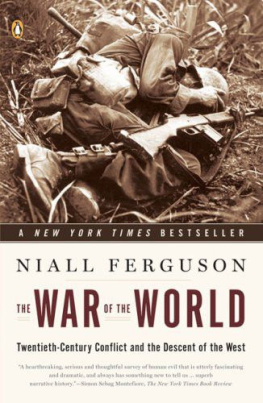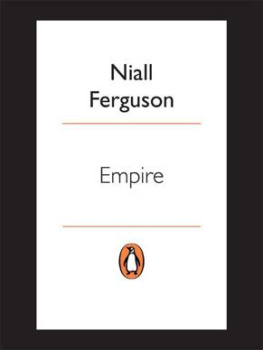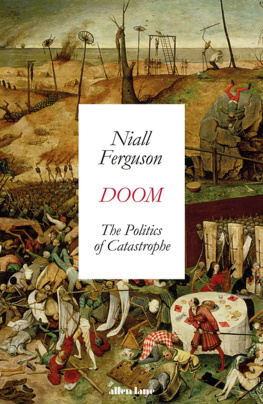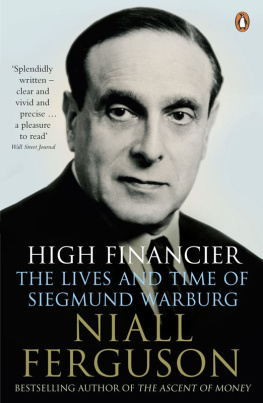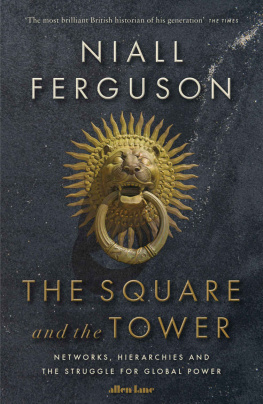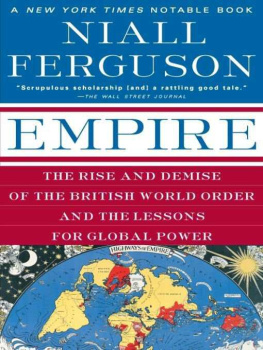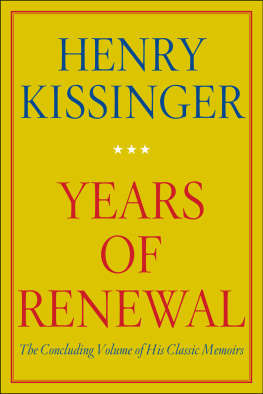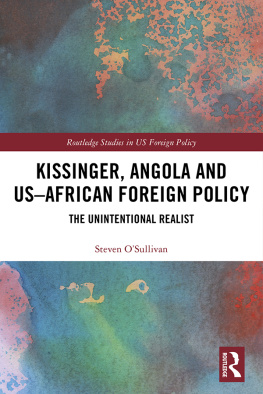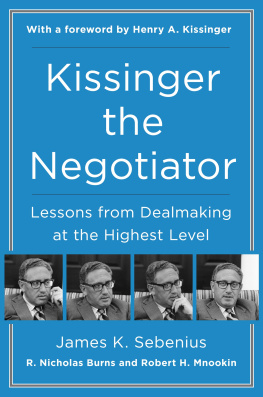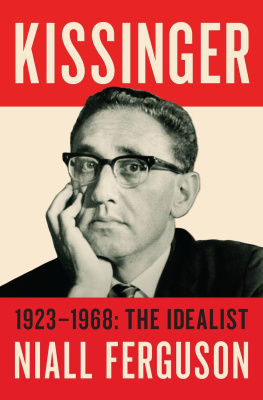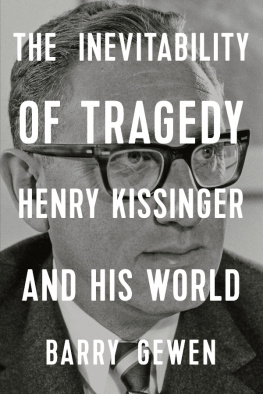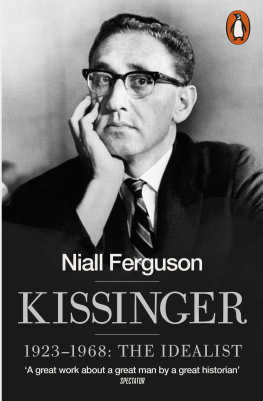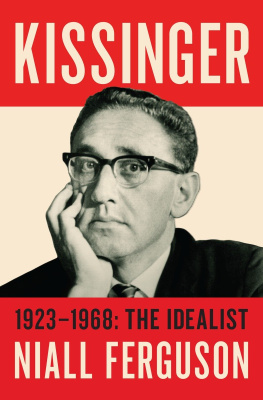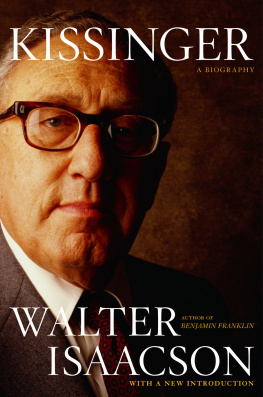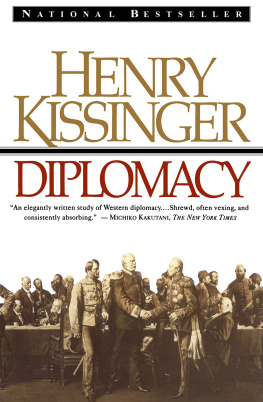ALSO BY NIALL FERGUSON
The Great Degeneration
Civilization
High Financier
The Ascent of Money
The War of the World
Colossus
Empire
The Cash Nexus
The Pity of War
The House of Rothschild
Volume II: The Worlds Banker, 18491999
The House of Rothschild
Volume I: Moneys Prophets, 17981848
Paper and Iron
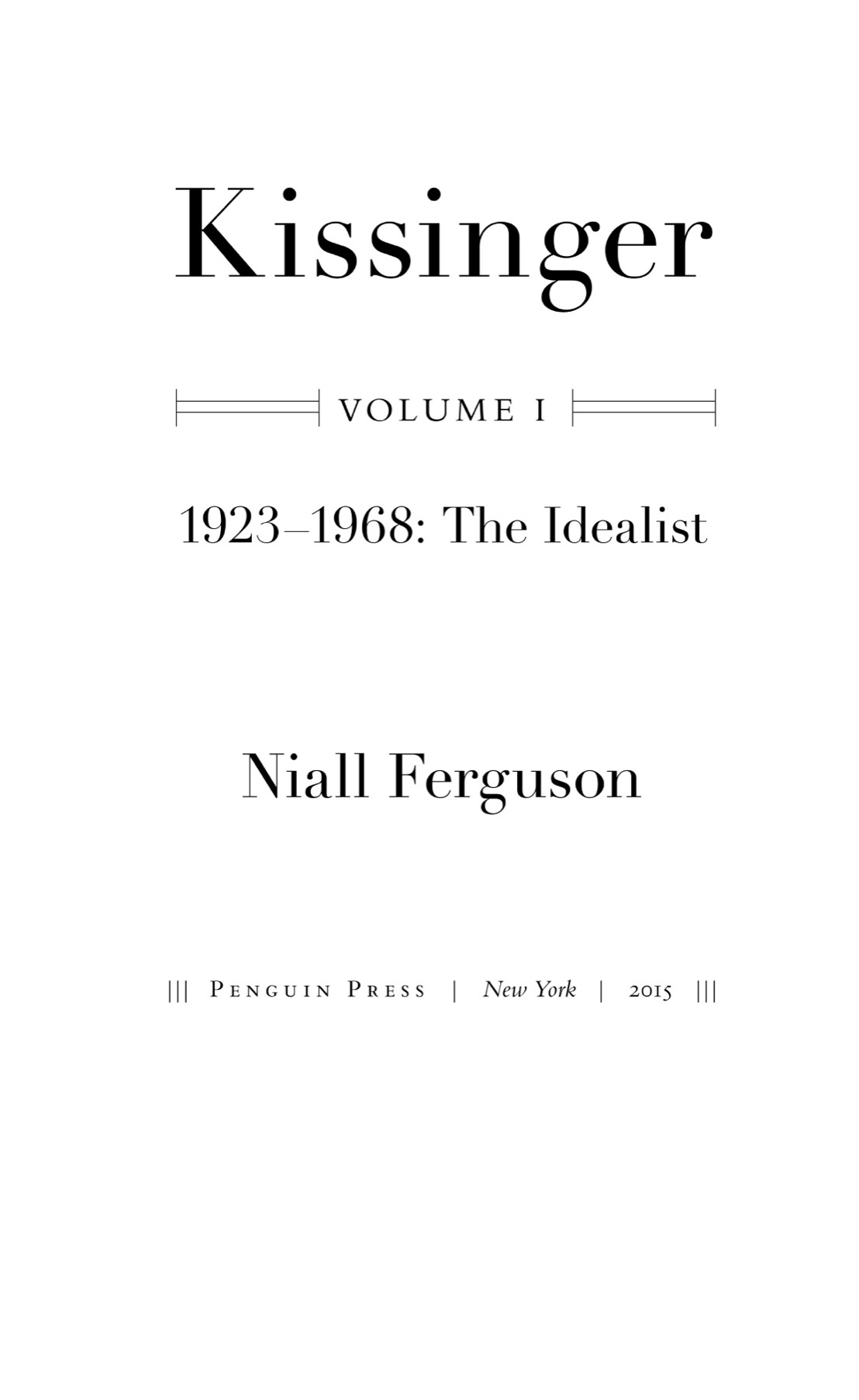
PENGUIN PRESS
An imprint of Penguin Random House LLC
375 Hudson Street
New York, New York 10014
penguin.com
Copyright 2015 by Niall Ferguson
Penguin supports copyright. Copyright fuels creativity, encourages diverse voices, promotes free speech, and creates a vibrant culture. Thank you for buying an authorized edition of this book and for complying with copyright laws by not reproducing, scanning, or distributing any part of it in any form without permission. You are supporting writers and allowing Penguin to continue to publish books for every reader.
Photograph credits appear here.
ISBN 978-0-698-19569-1
Version_1
IN MEMORIAM
Gerald Harriss (19252014)
Karl Leyser (19201992)
Angus Macintyre (19351994)
Contents
Also by Niall Ferguson
Title Page
Copyright
Dedication
Preface
INTRODUCTION
BOOK I
CHAPTER 1 Heimat
CHAPTER 2 Escape
CHAPTER 3 Frth on the Hudson
CHAPTER 4 An Unexpected Private
CHAPTER 5 The Living and the Dead
CHAPTER 6 In the Ruins of the Reich
BOOK II
CHAPTER 7 The Idealist
CHAPTER 8 Psychological Warfare
CHAPTER 9 Doctor Kissinger
CHAPTER 10 Strangelove?
CHAPTER 11 Boswash
BOOK III
CHAPTER 12 The Intellectual and the Policy Maker
CHAPTER 13 Flexible Responses
CHAPTER 14 Facts of Life
CHAPTER 15 Crisis
BOOK IV
CHAPTER 16 The Road to Vietnam
CHAPTER 17 The Unquiet American
CHAPTER 18 Dirt Against the Wind
BOOK V
CHAPTER 19 The Anti-Bismarck
CHAPTER 20 Waiting for Hanoi
CHAPTER 21 1968
CHAPTER 22 The Unlikely Combination
EPILOGUE: A Bildungsroman
Photographs
Acknowledgments
Notes
Sources
Illustration Credits
Index
Preface
Indeed I cannot conceive a more perfect mode of writing any mans life, than not only relating all the most important events of it in their order, but interweaving what he privately wrote, and said, and thought; by which mankind are enabled as it were to see him live, and to live oer each scene with him, as he actually advanced through the several stages of his life. I will venture to say that he will be seen in this work more completely than any man who has ever yet lived. And he will be seen as he really was; for I profess to write, not his panegyrick, which must be all praise, but his Life. [I]n every picture there should be shade as well as light.
BOSWELL, Life of Johnson1
The task of the biographer, as James Boswell understood, is to enable the reader to see, in her minds eye, his subject live. To achieve this, the biographer must know his subject. That means reading all that he wrote as well as much that was written about him. It also means, if the subject is living, not merely interviewing him but getting to know him, as Boswell got to know Johnson: conversing with him, supping with him, even traveling with him. The challenge is, of course, to do so without falling so much under the subjects influence that the reader ceases to believe the disclaimer that the work is a life, not a panegyric. Boswell, who grew to love Johnson, achieved this feat in two ways: by making explicit Johnsons boorish manners and slovenly appearance, but also (as Jorge Luis Borges noted) by making himself a figure of fun a straight man to Johnsons wit, an overexcitable Scot to Johnsons dry Englishman.2 My approach has been different.
In addition to the help of all those thanked in the acknowledgments, this author has had one noteworthy advantage over his predecessors: I have had access to Henry Kissingers private papers, not only the papers from his time in government, housed at the Library of Congress, but also the private papers donated to Yale University in 2011, which include more than a hundred boxes of personal writings, letters, and diaries dating back to the 1940s. I have also been able to interview the subject of the work on multiple occasions and at considerable length. Not only has this book been written with Henry Kissingers cooperation; it was written at his suggestion.
For this reason, I can predict with certainty that hostile reviewers will allege that I have in some way been influenced or induced to paint a falsely flattering picture. This is not the case. Although I was granted access to the Kissinger papers and was given some assistance with the arrangement of interviews with family members and former colleagues, my sole commitment was to make my best efforts to record [his] life as it actually was on the basis of an informed study of the documentary and other evidence available. This commitment was part of a legal agreement between us, drawn up in 2004, which ended with the following clause:
While the authority of the Work will be enhanced by the extent of the Grantors [i.e., Kissingers] assistance it will be enhanced still more by the fact of the Authors independence; thus, it is understood and agreed that the Author shall have full editorial control over the final manuscript of the Work, and the Grantor shall have no right to vet, edit, amend or prevent the publication of the finished manuscript of the Work.
The sole exception was that, at Dr. Kissingers request, I would not use quotations from his private papers that contained sensitive personal information. I am glad to say that he exercised this right on only a handful of occasions and always in connection with purely personal and indeed intimate familial matters.
This book has been just over ten years in the making. Throughout this long endeavor, I believe I have been true to my resolve to write the life of Henry Kissinger as it actually waswie es eigentlich gewesen, in Rankes famous phrase (which is perhaps better translated as it essentially was). Ranke believed that the historians vocation was to infer historical truth from documents not a dozen documents (the total number cited in one widely read book about Kissinger) but many thousands. I certainly cannot count how many documents I and my research assistant Jason Rockett have looked at in the course of our work. I can count only those that we thought worthy of inclusion in our digital database. The current total of documents is 8,380a total of 37,645 pages. But these documents are drawn not just from Kissingers private and public papers. In all, we have drawn material from 111 archives all around the world, ranging from the major presidential libraries to obscure private collections. (A full list of those consulted for this volume is provided in the sources.) There are of course archives that remain closed and documents that remain classified. However, compared with most periods before and since, the 1970s stand out for the abundance of primary sources. This was the age of the Xerox machine and the audio tape recorder. The former made it easy for institutions to make multiple copies of important documents, increasing the probability that one of them would become accessible to a future historian. Nixons and Kissingers fondness for the latter, combined with the expansion of freedom of information that followed Watergate, ensured that many conversations that might never have found their way into the historical record are now freely available for all to read.
My motivation in casting the widest and deepest possible net in my trawl for material was straightforward. I was determined to see Kissingers life not just from his vantage point but from multiple vantage points, and not just from the American perspective but from the perspectives of friends, foes, and the nonaligned. Henry Kissinger was a man who, at the height of his power, could justly be said to bestride the world. Such a mans life requires a global biography.
Next page

